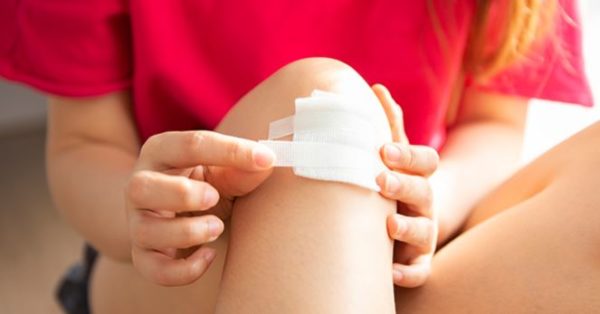Lifestyle
The right way to treat a wound at home

You can be super careful while doing all your activities, yet you cannot rule out the likelihood of getting cuts, scrapes and minor burns while doing household chores.
Even with kids, there is always a possibility of getting an injury while playing in the park or cycling.
Be it a major or a minor injury, both need to be dealt with the equal care and precaution.
The initial steps to handle injury matter a lot to minimise the risk of complications and speedy recovery.
Why is prompt action needed after an injury?
An open wound or injury leaves the internal, delicate tissue of the skin exposed to the external environment. It can increase the risk of infection if initial treatment is not provided on time. Treating the wound properly will help to clear the infection and also increase the speed of recovery. Minor injuries like cuts, scrapes and minor burns can be easily treated at home, by following some easy steps. For major injuries like falls, second and third-degree burns, and fractures, it is advised to seek medical help as soon as possible.
Steps to treat an open wound
Treating a minor open wound is pretty simple, you just need to have a first aid kit at home with all the basic things like disinfectant, cotton, antiseptic and a bandage. Here are the steps you need to follow:
1. Wash your hands: Wash your hands with soap and water to remove dirt and debris. If you are wearing any piece of jewellery, remove it as well.
2. Apply pressure: Apply gentle pressure on the wound if it is bleeding and elevate it to reduce swelling.
3. Wash the wound: Rinse the wound with water and a saline solution once the bleeding has stopped. Keep them under running water to reduce the risk of infection. If applying soap, wash the skin around the wound.
Other things to do
4. Examine for any debris: Look for any debris and dirt trapped in the wound. Remove it carefully by placing it under running water or using tweezers cleaned with saline solution.
5. Apply antibiotic: Apply a thin layer of an antibiotic or petroleum jelly to keep the surface of the wound moist.
6. Cover the wound: Apply an adhesive bandage or band-aid to cover the wound.
Taking care of the wound
The minor injury gets better on its own with time, you do not have to do much. The initial treatment is required to expedite the process of healing. If you have covered your wound with a bandage, you need to examine it from time to time to track the recovery process and consult doctors at the right time when matters get worse.
Change the dressing: Change the dressing at least once a day. You should also change the bandage when it becomes wet or dirty. Clean the area with water, pat it dry with a clean cloth, apply antibiotics and then put a bandage again.
Get a tetanus shot: Get a tetanus shot if you haven’t had one in the past six months or the wound is deep.
Watch for signs of infection: If there is any sign of infection on the skin or near the wound consult your doctor.
How to treat burn
The process of treating a first-degree burn is different from that of treating cuts and scrapes. In the case of burn you cannot apply pressure nor can you put a bandage. These can make your burn worse.
First of all, run cool water over your burn area for about 20 minutes, then wash it with soap and water. After that place a cool compress or clean wet cloth over the burn for relief from pain and swelling. You can apply aloe vera or burn cream over the affected area. Avoid exposing your burn to direct sunlight.
When to contact your doctor?
If your wound does not appear better after a few days or you witness any of the given symptoms you must consult your doctor immediately.
- Redness or swelling
- Intense pain
- Unusual or increased drainage
- Fever or chills.






